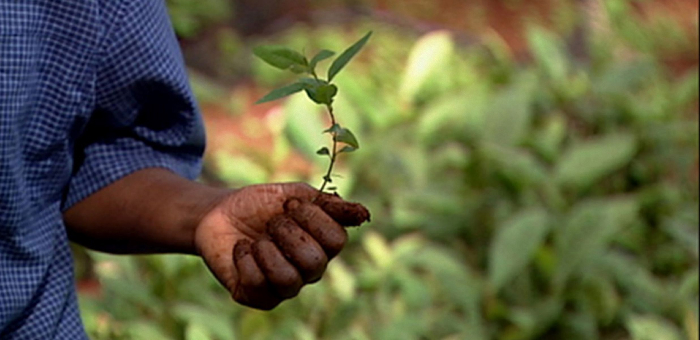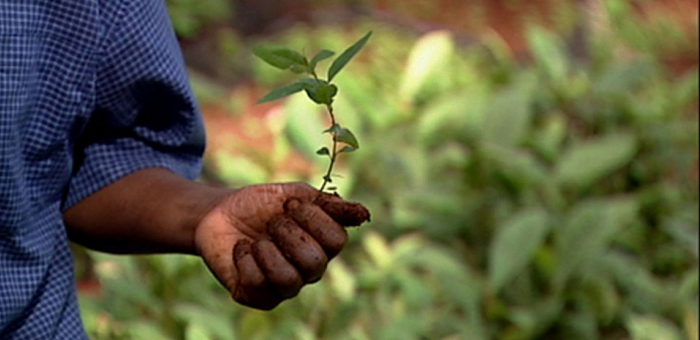 Planting trees in Kenya is about more than just helping the environment.
Planting trees in Kenya is about more than just helping the environment.
Alan Dater
Planting trees in deforested areas brings a host of benefits, as any good environmentalist knows. Trees provide cleaner air, richer soil, wildlife habitat, and shade. They conserve water and protect lands against floods. They absorb carbon dioxide.
Under the rule of an oppressive regime, tree planting can also be a profoundly subversive act.
This is the focus of Taking Root: The Vision of Wangari Maathai, a documentary about the Kenyan activist that premiers on the PBS series Independent Lens this Tuesday, April 14.
 Wangari MaathaiMartin Rowe
Wangari MaathaiMartin Rowe
By now the story of Maathai, the 2004 Nobel Peace Prize winner, has been well told. (Read Grist’s profile from 2004.) After becoming the first woman in East Africa to earn a PhD, Maathai founded the Green Belt Movement in 1977. The women’s group has planted 30 million trees across the country, employing thousands of women and providing them with education and solidarity.
In Taking Root, by independent filmmakers Alan Dater and Lisa Merton, Maathai says, “When the women started, no one took them seriously, because who takes women seriously? Then the government realized we were organizing women. And they started interfering.”
The film spans Maathai’s life, from her rural childhood and Catholic-school education to the present, but it focuses most heavily on the ways she challenged the Kenyan government, particularly the 24-year dictatorship of Daniel arap Moi.
The interference began with Kenyan officials demanding licenses and restricting meetings from the Green Belt Movement. It grew much more dramatic when Moi proposed replacing Nairobi’s only major public park with a skyscraper and a statue of himself. Maathai and Green Belt organizers successfully appealed to Moi’s international funders to help defend the park.
“In all her fights, that was the biggest fight, because that also was the turning point in this country that no matter how small you are, you can make a difference,” says human rights activist Ngorongo Makanga.
The filmmakers unearth truly impressive archival footage, including scences of the police brutality at Uhuru Park and Kenya’s Karura Forest. It makes for disturbing moments, though they feel necessary to the story, not gratuitous. Some of the most gripping moments are the more pastoral scenes of women working to restore forests and, later, of soldiers in uniform planting trees.
Taking Root has more to say about social change than about forest ecology–I’m not sure it even mentions the types of trees being planted. But it makes abundantly clear the connections between environmental health, human rights, and democracy. I haven’t read them, but Maathai’s autobiography, Unbowed, and her just-released call to action, The Challenge for Africa, look to offer much of the same.
Truth be told, Taking Root often has the good-for-you feel of so many documentaries, the sort of thing you’d watch in civics class. Then again, a college dorm-mate once said that to me about Gandhi. I’m glad I didn’t listen to him and watched it anyway.




